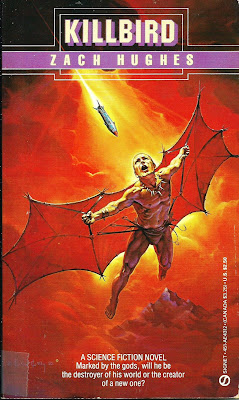Book Review: 'Cheap Thrills / An Informal History of the Pulp Magazines' by Ron Goulart
4 / 5 Stars
What was to become known as the great Nostalgia Craze of American popular culture was underway and gathering steam when, in 1970, Tony Goodstone published The Pulps: 50 Years of American Pop Culture, a well-produced hardbound book that combined color prints of pulp magazines covers, black-and-white illustrations from the magazine interiors, and reprints of selected pulp stories.
The indefatigable Ron Goulart (b. 1933), himself a fan of the pulps, followed up in 1972 with Cheap Thrills, his own hardbound exploration of the magazines.
Like Goodstone's book, Goulart provided an overview of the different categories of pulps, highlighting some of the more prominent authors, editors, and characters. However, unlike Goodstone, who brought a 'this stuff is so campy, but hey, it's nostalgic' attitude towards the subject, Goulart was more affectionate in his treatment of the pulps.
In 1973 Ace Books released a paperback version of Cheap Thrills, retitled An Informal History of the Pulp Magazines (192 pp.). The paperback version contains a section of magazine covers reproduced in graytone. Cheap Thrills covered the genre from its origins early in the 20th century, to the decline and eventual cancellation of the pulps in the early 1950s.
In 2007 the Hermes Press released a 8.4 x 10.8 inch trade paperback version of Cheap Thrills, with additional text and illustrations.
Copies of all three editions of Cheap Thrills can be had for affordable prices, but the 2007 Hermes Press edition is the best of them in terms of illustrations and content.
I found Cheap Thrills to be very readable, filled with little bits of info and anecdotes that help illuminate not just the pulps, but American pop culture as a whole. Goulart starts the book off with an overview of the growth of the magazine market in the US during the late 19th and early 20th centuries, then segueing into chapters devoted to the different pulp genres: heroes, The Shadow, Doc Savage, crimefighters, secret agents, cowboys, Tarzan and barbarians, and science fiction. In the Hermes Press edition these chapters are crammed with reproductions of the magazine covers and interior illustrations.
The closing section of the Hermes Press edition reproduces in their entirety the letters mailed to Goulart in response to his inquiries to pulp editors and writers for their reminiscences of the era. Along with insights into how the pulps operated, it's illuminating to see what it really meant to type a letter in 1969, years before word processor programs and PCs and personal printers became something we now take for granted.
The interviews with pulp authors make clear that during the depths of the Depression writing for a penny (or sometimes a half-penny) a word was a route to financial security (or even wealth, for some practitioners) for men (and more rarely, women) who were seeking to escape the pervasive hard times then gripping the nation.





























































